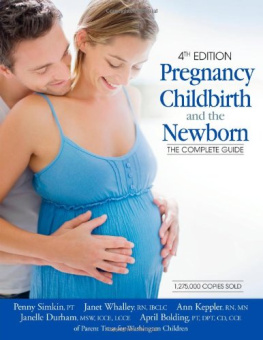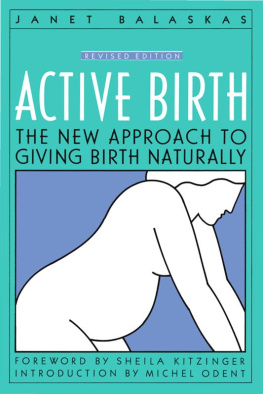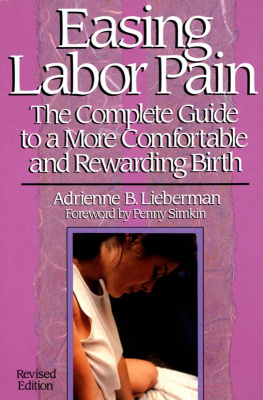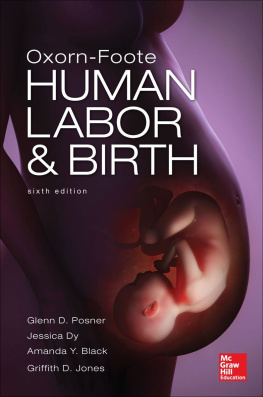
The Harvard Common Press
www.harvardcommonpress.com
Copyright 2013 by Penny Simkin
Cover illustration 2013 by Lola and Bek
All rights reserved. No part of this publication may be reproduced or transmitted in any form or by any means, electronic or mechanical, including photocopy, recording, or any information storage or retrieval system, without permission in writing from the publisher.
Printed on acid-free paper
The Library of Congress has cataloged the print edition as follows:
Simkin, Penny
The birth partner : a complete guide to childbirth for dads, doulas, and all other labor companions / Penny Simkin.Fourth edition.
pages cm
ISBN 978-1-55832-819-8 (pbk.)
1. Pregnancy. 2. Natural childbirthCoaching. 3. Labor (Obstetrics)Complications. 4. Childbirth. I. Title.
RG525.S5829 2013
618.2dc23
2013007371
Special bulk-order discounts are available on this and other Harvard Common Press books. Companies and organizations may purchase books for premiums or resale, or may arrange a custom edition, by contacting the Marketing Director at the address above.
Photographs by Patty Simanek, Barefoot Photography ()
Cover illustration by Lola and Bek
Drawings by Shanna Dela Cruz, Penny Simkin, and Childbirth Graphics
Cover design by Night & Day Design
eISBN 978-1-558-32820-4
v1.0913
Dedication
This book is dedicated...
To the thousands of expectant mothers and fathers who have taught me so much while I have taught them;
To the hundreds of women and their loving partners whom I have been privileged to assist during childbirth;
To my four grown children, to whom I could not feel closer and of whom I could not be more proud, and to their spouses, who enrich my life;
To my eight grandchildren, whose births I have attended in the role of proud grandmother;
To the newest members of our family, our two grandchildren-in-law;
And lastly but especially to Peter, my husband, father of our children, and my beloved partner for five decades.
Preface to the Fourth Edition
Id like to explain what led me to write the first, second, third, and now fourth editions of this book. The first edition was published in 1989, after I learned some truths about what birth means to women and about what it means to be a birth partner who deeply loves the woman giving birth. One of these truths is this: How a woman gives birth mattersto her babys long-term health, to her family (including her relationship with her partner), and to her mental and physical health and her self-confidence and self-esteem as a woman and a mother. This is as true today, with this fourth edition, as it was in 1989, and for generations (even millennia) before.
Another very important truth: How a woman is cared for and supported during birth is a major influence, not only in how she gives birth but also in how she feels about it. Yet, medical care before and during childbirth focuses almost exclusively on the physical safety of baby and mother. This medical care places little emphasis on the mothers emotional well-being, her relationship with her partner, and her readiness to parent. Such matters are given low priority in our very expensive health-care system, which is beset by nursing shortages, pressure to increase the use of medical and surgical interventions while increasing efficiency, reduction of psychosocial support services, threats of malpractice lawsuits, and other factors that work against personalized, flexible, woman-centered care.
I learned the importance of emotional care during labor when, in the late 1980s, I conducted a study of womens long-term memories of their birth experiences. The women were from childbirth classes that I taught between 1968 and 1974. They had sent me their birth stories shortly after they gave birth. For my study, I contacted the women 15 to 20 years later and asked them (1) to write their birth stories again as they remembered them and (2) to rate their satisfaction as they looked back on their childbirth experiences.
In comparing the two stories from each woman, I was astounded at how clearly they remembered and how consistent their stories were, despite the interval of 15 to 20 years. I then interviewed the women and discovered that they had detailed memories of their doctors and nurses (there were no midwives practicing in my area at that time). All the women vividly remembered specific things that were done and said to them. Many could quote the exact words! Some actually wept as they recalled some of these thingseither from joy over the kindness and care they received, or from sadness or anger over being treated disrespectfully or thoughtlessly.
In a nutshell, those who felt they had been well cared for by the professional staff reported the highest satisfaction, even if their labors had been long or complicated. Those who felt they had been treated disrespectfully or ignored reported the least satisfaction. Also, those who were most satisfied felt a great sense of accomplishment in giving birth. They felt that they had been in control, and that the birth experience had been good for their self-esteem. The less satisfied women did not have these positive feelings.
The presence of the womens husbands was unusual because, at the time, it was not customary for men to attend childbirth classes or the births of their babies. Most of these men took as active a role as they were allowed, although they were often required to leave the labor or delivery room for long periods (at the time, only husbands, not other lovers, relatives, or friends, were allowed to be with laboring women at all).
The womens memories of their husbands were also clear and detailed. Here are quotations from some of the women:
He was the only reason I got through it.
It was one of the finer moments in our life and relationship. He was more patient and took it more seriously than I expected.
Hes a competitor. He was my coach. It was a very big deal for him.
It hurt him to see me in pain.
He could feel me tense immediately.
He was there 100 percent.
He was apprehensive, but wanted to be there.
I learned from that study that women need and appreciate loving, familiar people to stay with them, help them, and share the birthone of lifes most meaningful moments. I also learned that the kind of professional care and emotional support a woman receives during labor determines whether she looks back on the birth experience with satisfaction and fulfillment or with disappointment, sadness, and even anger. I realized that, in this age of high-tech, high-pressure obstetrics, it is unrealistic to expect that busy nurses, doctors, and even hospital-based midwives can provide continuous emotional and physical comfort throughout labor and birth along with all their other responsibilities.
The lessons from my study have been confirmed over and over again by other similar studies, in the hundreds of births I have attended as a doula, and in the experiences of thousands of women and partners I have taught in my childbirth classes. Their lessons prompted me to write the first edition of this book. I wanted to help partners feel more knowledgeable and confident in their support role, so that women would always appreciate their partners help. This was also when I decided to train doulas and, with other outstanding doula advocates, founded the Seattle-based doula organization (Pacific Association for Labor Support) and an international one (Doulas of North America, now DONA International). My goal was to ensure that childbearing women get the kind of care they need, and their partners the kind of practical guidance and tools they need during this challenging and unforgettable time.
Next page








